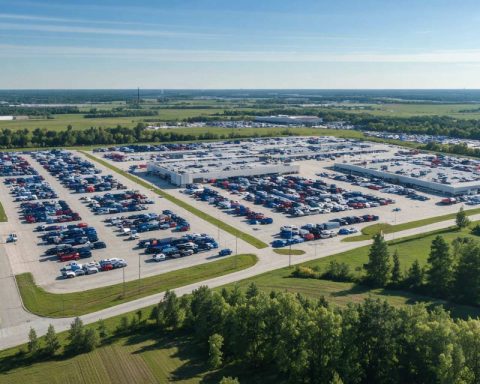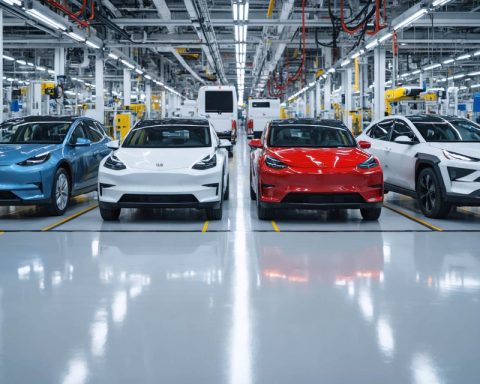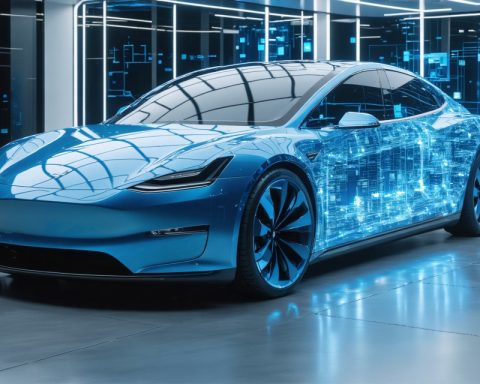- Solid-state batteries are poised to revolutionize the electric vehicle (EV) market, offering higher energy density and longer driving ranges than conventional lithium-ion batteries.
- These batteries enhance safety by reducing the risk of thermal runaway, thanks to their solid electrolyte design, making them more robust and less flammable.
- Solid-state technology promises significantly faster charging times, addressing a major concern for EV users and enhancing convenience.
- The production of solid-state batteries is more environmentally friendly, eliminating harmful liquids and extending battery lifespan, leading to fewer resources being used.
- The race for commercialization is intense, with companies like Toyota and QuantumScape striving to overcome challenges in manufacturing scale and cost efficiency.
- Widespread adoption of solid-state batteries is set to transform the driving experience, with a focus on range, safety, and sustainability.
The electric vehicle (EV) market charges forward with an electrifying promise—solid-state batteries poised to transform the driving experience. Imagine driving hundreds of miles on a single charge without a second thought about battery wear. This isn’t some far-off vision; it’s the near future.
Revolutionary Design Meets Real-World Demand
Conventional lithium-ion batteries, the pulsating heart of today’s EVs, have driven innovation for years. However, they fall short on energy density and safety—critical factors for efficiency and reliability. Enter solid-state batteries, which replace the liquid or gel electrolytes with a solid electrolyte. This technological leap offers a higher energy density, thus promising longer driving ranges.
More robust and less flammable than their liquid counterparts, these batteries can reduce the risk of thermal runaway—a mood killer for peace of mind. One can only imagine the potential of driving a sleek Tesla Roadster for over 600 miles before having to plug in.
Solving the Charging Conundrum
Long charging times have haunted EV enthusiasts like a specter. Solid-state technology could alleviate these concerns. With some designs boasting the ability to charge vehicles in a fraction of the time, the dreaded recharge wait may soon become a trivial sideline. Fast charging at unprecedented speeds means worrying less about being tethered to charging stations and more about the open road.
Environmental Boon or Bane?
While EVs champion eco-friendliness, their production demands sustainability. Solid-state batteries promise eco-friendlier production methods by largely eliminating harmful liquids. Their increased lifespan also means fewer resources expended on manufacturing replacements. This represents a dual victory—vehicles gentler on the planet both in motion and creation.
Riding the Wave of Innovation
The race to commercialize solid-state batteries is fierce, with industry giants like Toyota and QuantumScape sprinting to perfect these marvels. Mass production, however, remains a hurdle, with challenges in manufacturing scale and cost efficiency. Optimism abounds as breakthroughs sprout from research labs globally, bridging gaps previously thought too wide.
Takeaway: A Vision Charged for Perfection
Solid-state batteries court a paradigm shift in EV technology, promising to redefine what drivers expect from their vehicles. As these powerhouses inch closer to our day-to-day reality, they invite us to ponder a future where worries over range, safety, and sustainability fade into history. Expect widespread adoption to revolutionize our highways, unlocking a cleaner, more efficient motoring era. The road ahead gleams with promise, charged with the allure of innovation, inviting every driver to take part in this electrifying journey.
Solid-State Batteries: Will They Revolutionize Electric Vehicles?
What Are Solid-State Batteries?
Solid-State Battery Basics:
Solid-state batteries switch out the liquid or gel electrolytes typical in lithium-ion batteries for solid electrolytes, offering greater safety due to reduced flammability. The design promises higher energy density, enabling longer driving ranges and potentially allowing electric vehicles (EVs) to achieve 600 miles on a single charge.
How Do They Impact EV Performance?
Enhanced Driving Experience:
1. Extended Range: The higher energy density means EV owners could travel greater distances without frequent recharging. According to reports, some solid-state batteries could increase range by as much as 50% compared to traditional lithium-ion batteries.
2. Safety Improvements: The inherent stability of solid electrolytes minimizes the risk of thermal runaway, enhancing overall vehicle safety. This could translate to lower insurance premiums for EV owners due to reduced risks.
3. Faster Charging: With faster ion transfer rates, some designs allow for significantly reduced charging times, addressing one of the major drawbacks of current EV technology.
Where Do We Stand on Production?
Challenges in Commercialization:
– Scalability: Despite the promise, mass production of solid-state batteries is a complex challenge. Current manufacturing processes need refining before widespread adoption is feasible.
– Cost Concerns: Economies of scale are yet to be achieved, with cost efficiency being a major barrier. While prices are high now, industry experts predict they will drop as technology matures and production capabilities expand.
How Do They Impact the Environment?
Sustainability Factor:
– Eco-Friendly Manufacturing: The elimination of liquid electrolytes reduces environmental hazards in battery production processes, presenting a greener alternative.
– Lifecycle Benefits: Solid-state batteries tend to have longer lifespans, reducing the frequency of replacement and thus minimizing the ecological footprint associated with battery disposal.
What Are the Current Market and Industry Trends?
Competitive Landscape:
– Leading Players: Key players like Toyota, Samsung, and QuantumScape are spearheading efforts to bring solid-state technology to market. Numerous partnerships and collaborative research projects are underway worldwide.
– Emerging Innovations: Startups and established companies alike are experimenting with diverse materials like lithium metal and ceramic for the solid electrolyte, aiming to enhance performance further.
What Are the Current Limitations?
Roadblocks to Adoption:
1. Manufacturing Complexities: The production of solid-state batteries involves new materials and processes not yet perfected at an industrial scale.
2. Material Challenges: Research is ongoing to develop solid electrolytes that maintain stability and performance across a range of temperatures.
Future Insight and Predictions
As breakthroughs in material science continue, solid-state batteries are expected to enter the mainstream within the next decade, transforming not only electric vehicles but also the larger landscape of energy storage technologies.
Actionable Tips for Consumers
– Stay Informed: Keep up with industry news to learn about planned launches and solid-state battery developments from major automakers.
– Consider Long-Term Investment: If purchasing an EV, inquire about potential battery upgrade paths or leasing options that may integrate solid-state technology in the future.
Related Resources
– Visit Toyota to follow their innovation journey with solid-state batteries.
– For in-depth research insights, keep an eye on publications by QuantumScape.
Solid-state batteries are poised to open new horizons in electric mobility. As these technologies evolve, engaging with credible news sources and automakers will help consumers make informed decisions about future EV purchases.

















